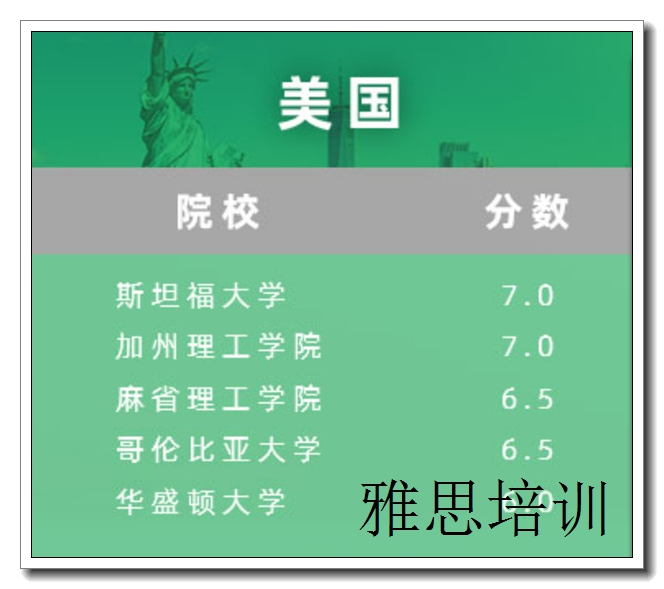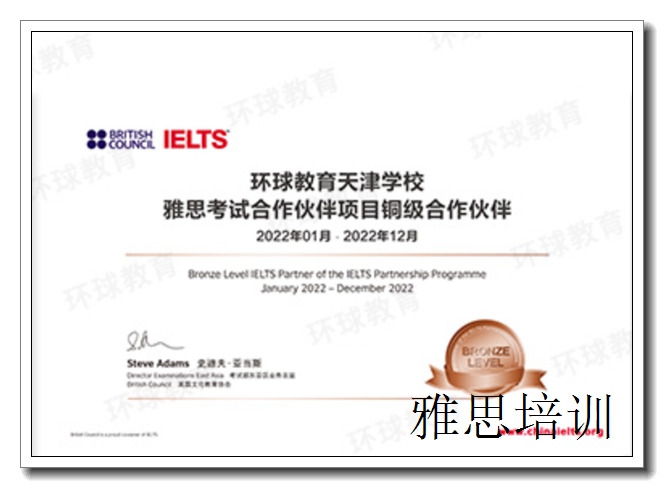咨询热线 400-6169-615
三人行教育网,代理招生网站合作机构 > 学校机构 > 杭州雅思培训学校欢迎您!
滨江雅思单项培训,专注雅思
发布时间:2023-04-25 11:26:43
滨江雅思单项培训,专注雅思学校优势特色:
1优势:
内容专业,集团教研成果,系统化练习册,讲练有效结合;
练习充分,10k+词汇量,12册练习题,贯穿备考全程
成长可视,阶段模考+解析,SA全程监督,清晰学情报告。杭州环球雅思培训,杭州环球雅思培训学校,杭州环球雅思辅导励志语录:不是井里没有水,而是挖的不够深;不是成功来的慢,而是放弃速度快。得到一件东西需要智慧,放弃一样东西则需要勇气!。
2特色:
自主研发标准化大纲;
强大的师资队伍;
九步闭环教学法(课前预习、进门测试、课堂导入、课堂讲授、课堂巩固、出门测试、课后巩固、微信打卡、学情反馈); 杭州雅思培训学习,杭州专业雅思培训机构,杭州雅思培训课程,杭州雅思培训班,杭州学雅思经典格言:如果你受苦了,感谢生活,那是它给你的一份感觉;如果你受苦了,感谢上帝,说明你还活着。人们的灾祸往往成为他们的学问。滨江雅思单项培训,专注雅思。

滨江雅思单项培训,专注雅思 雅思模拟试题在雅思备考过程中所起的作用不可小觑,通过模拟练习题,我们可以很直接地了解到自己的备考状况,从而可以更有针对性地进行之后的复习。希望以下内容能够对大家的雅思备考有所帮助!
Sun's fickle heart may leave us cold
□ 25 January 2007
□ From New Scientist Print Edition.
□ Stuart Clark
1.There's a dimmer switch inside the sun that causes its brightness to rise and fall on timescales of around 100,000 years - exactly the same period as between ice ages on Earth. So says a physicist who has created a computer model of our star's core.
2.Robert Ehrlich of George Mason University in Fairfax, Virginia, modelled the effect of temperature fluctuations in the sun's interior. According to the standard view, the temperature of the sun's core is held constant by the opposing pressures of gravity and nuclear fusion. However, Ehrlich believed that slight variations should be possible.
3.He took as his starting point the work of Attila Grandpierre of the Konkoly Observatory of the Hungarian Academy of Sciences. In 2005, Grandpierre and a collaborator, Gábor ágoston, calculated that magnetic fields in the sun's core could produce small instabilities in the solar plasma. These instabilities would induce localised oscillations in temperature.
4.Ehrlich's model shows that whilst most of these oscillations cancel each other out, some reinforce one another and become long-lived temperature variations. The favoured frequencies allow the sun's core temperature to oscillate around its average temperature of 13.6 million kelvin in cycles lasting either 100,000 or 41,000 years. Ehrlich says that random interactions within the sun's magnetic field could flip the fluctuations from one cycle length to the other.
5.These two timescales are instantly recognisable to anyone familiar with Earth's ice ages: for the past million years, ice ages have occurred roughly every 100,000 years. Before that, they occurred roughly every 41,000 years.
6.Most scientists believe that the ice ages are the result of subtle changes in Earth's orbit, known as the Milankovitch cycles. One such cycle describes the way Earth's orbit gradually changes shape from a circle to a slight ellipse and back again roughly every 100,000 years. The theory says this alters the amount of solar radiation that Earth receives, triggering the ice ages. However, a persistent problem with this theory has been its inability to explain why the ice ages changed frequency a million years ago.
7."In Milankovitch, there is certainly no good idea why the frequency should change from one to another," says Neil Edwards, a climatologist at the Open University in Milton Keynes, UK. Nor is the transition problem the only one the Milankovitch theory faces. Ehrlich and other critics claim that the temperature variations caused by Milankovitch cycles are simply not big enough to drive ice ages.
8.However, Edwards believes the small changes in solar heating produced by Milankovitch cycles are then amplified by feedback mechanisms on Earth. For example, if sea ice begins to form because of a slight cooling, carbon dioxide that would otherwise have found its way into the atmosphere as part of the carbon cycle is locked into the ice. That weakens the greenhouse effect and Earth grows even colder.
9.According to Edwards, there is no lack of such mechanisms. "If you add their effects together, there is more than enough feedback to make Milankovitch work," he says. "The problem now is identifying which mechanisms are at work." This is why scientists like Edwards are not yet ready to give up on the current theory. "Milankovitch cycles give us ice ages roughly when we observe them to happen. We can calculate where we are in the cycle and compare it with observation," he says. "I can't see any way of testing [Ehrlich's] idea to see where we are in the temperature oscillation."
杭州雅思培训学习,杭州专业雅思培训机构,杭州雅思培训课程,杭州雅思培训班,杭州学雅思经典格言:自己丰富才感知世界丰富,自己善良才感知社会美好,自己坦荡才感受生活喜悦,自己成功才感悟生命壮观!。

雅思冲刺7分班:15800;雅思强化VIP6人班:15800;雅思预备VIP4人班:12800
雅思基础VIP6人班:15800;雅思新精英计划:75000;起点计划:17100
新提分宝:23200;学霸班10800。
雅思考试类型
雅思考试(国际英语语言测试系统)
考试用途及分类
雅思考试是为那些打算在以英语作为交流语言的国家和地区读书或就业的人们设置的英语言水平考试,分为学术类和培训类
纸笔考试/机考+人人对话
用于英国移民及签证的雅思考试
考试用途及分类
用于英国签证及移民的雅思考试是英国签证和移民局对特定类型的英国签证申请所开设的考试。 1、别怪我太冷血,实情便是这样残酷——两情相悦时,你乐得付出,他乐得全收,你不感觉是牺牲,他不感觉你有多苦。爱情如果真是天平,相爱时真心与回应自然持平,不爱时,再多的付出再痛的牺牲不过是让轻的更轻重的更重。情事如此,事业生活也当如是。管它回收的是琼瑶还是木瓜,切切记住:甘愿做,欢喜受,别拿牺牲当口号。滨江雅思单项培训,专注雅思。
纸笔考试/机考+人人对话
雅思生活技能类考试
考试用途及分类
只测试考生的英语口语与听力水平,分为CEFR(欧洲语言共同参考框架)A1及B1级别两类。该考试旨在满足英国签证与移民局对英国特定签证申请的要求。
人人对话

滨江雅思单项培训,专注雅思雅思考试内容、评分标准;
|
听力40分钟 4部分 40道题
考试内容
听四段录音,难度不断递增。录音听一遍,会留给考生一些时间阅读问题并记录答案
评分标准 雅思听力试卷包括40题,每答对一题得一分。满分的原始分均为40分 |
口语11-14分钟 3部分
考试内容
采用一对一面试形式。考察考生日常会话、对熟悉话题作一定描述及与考官之间的互动能力
评分标准 按四项标准分别评等级分:流利性与连贯性、词汇多样性、语法多样性及准确性、发音 |
|
阅读60分钟 3篇文章 40道题
考试内容
考生将阅读三篇文章并回答文章后问题,文章从书本、杂志、期刊及报纸上选取
评分标准 雅思阅读试卷包括40题,每答对一题得一分。满分的原始分均为40分,考生依据其原始分获取1-9分的等级 |
写作60分钟 2篇作文
考试内容
Part1:根据表格或图表,写一篇约150字的文章;Part2:针对某问题或观点写一篇约250字短文
评分标准
按四项标准分别评等级分:
写作任务完成&回应情况、连贯与衔接、词汇丰富程度、语法多样性及准确性。 |
